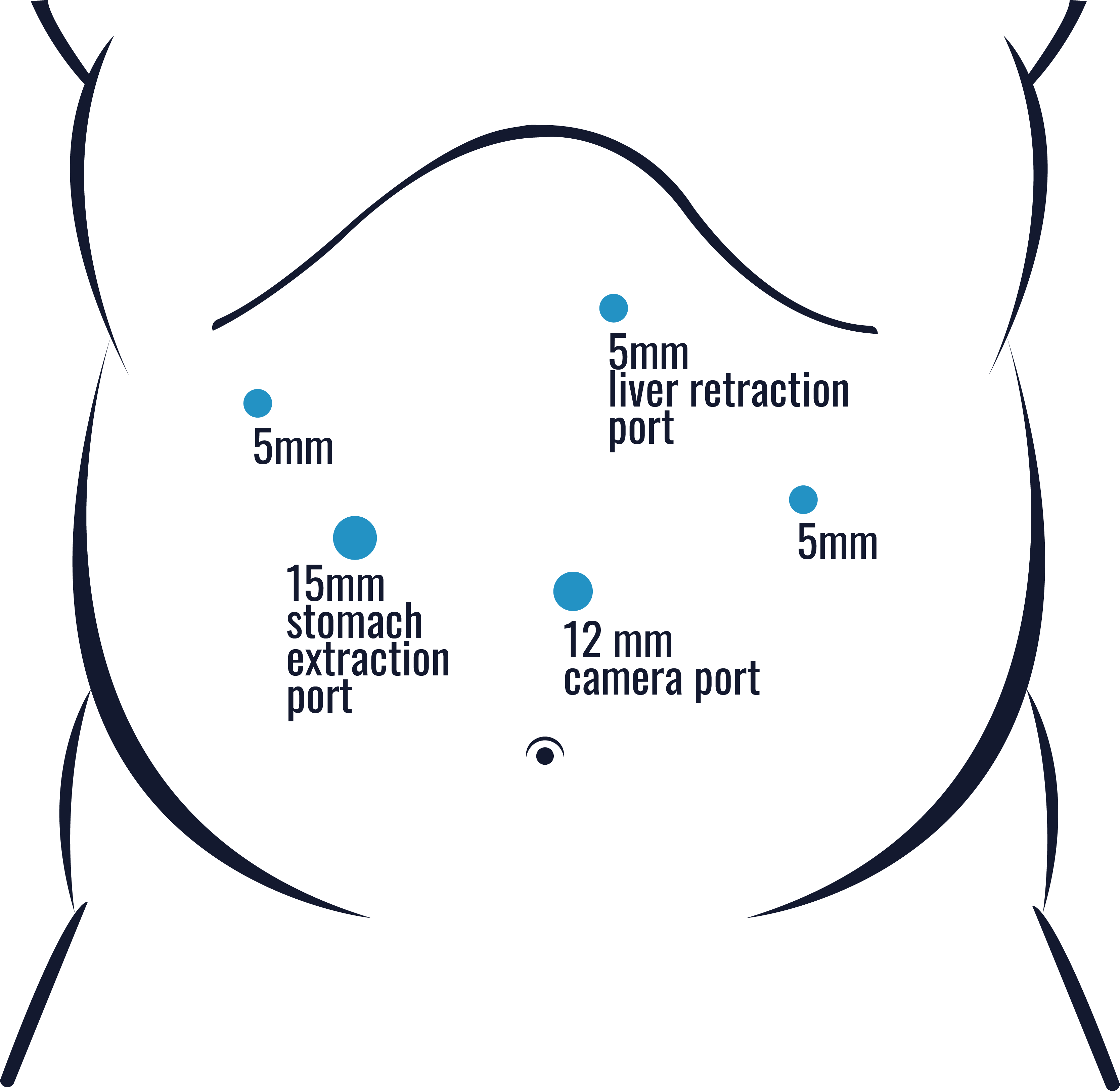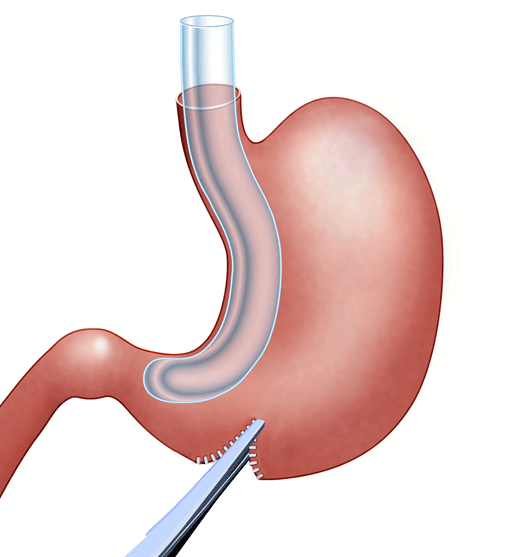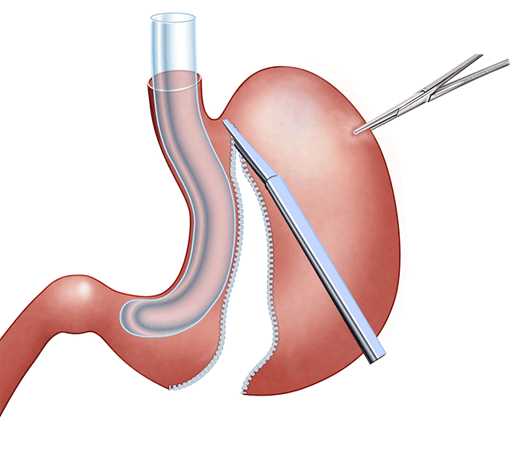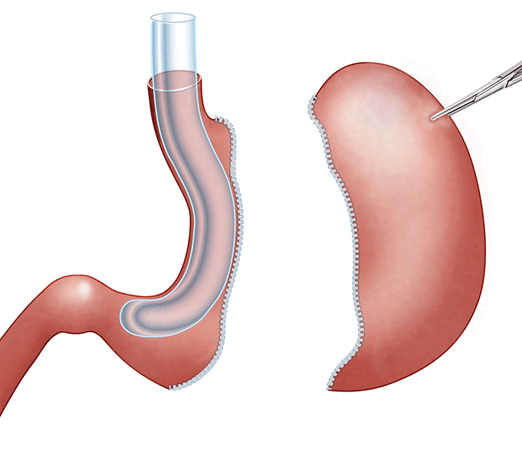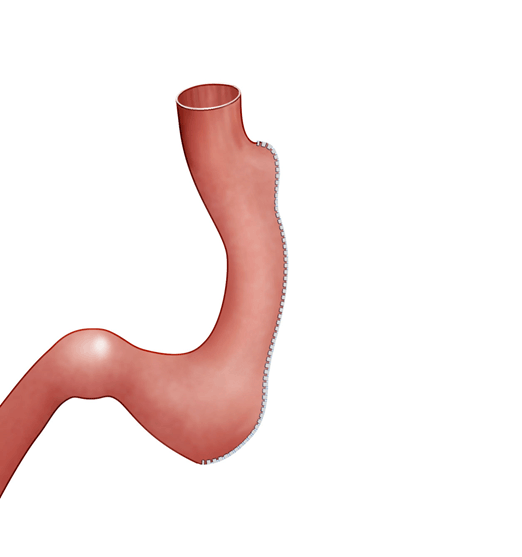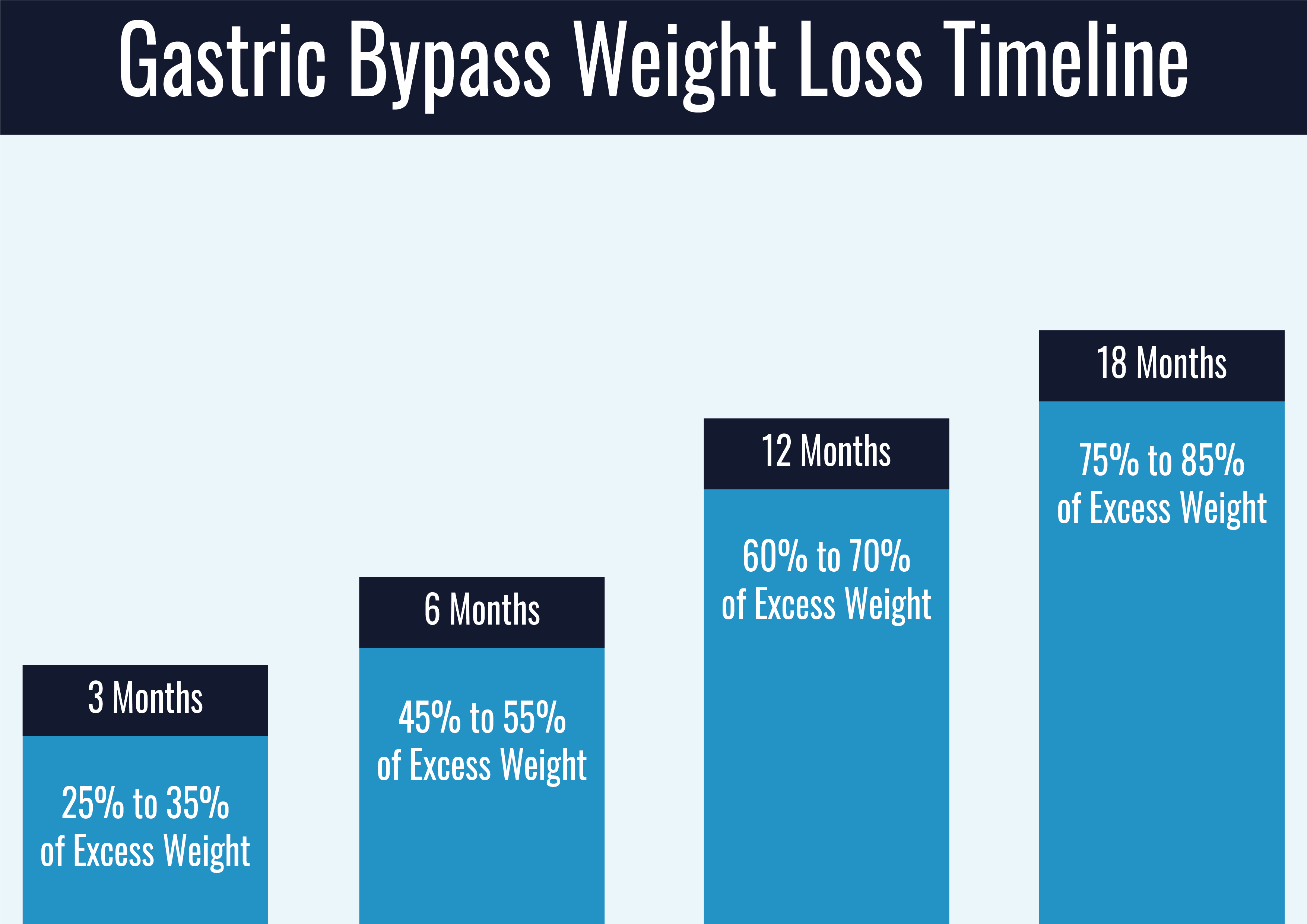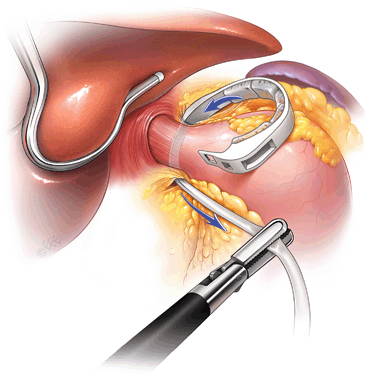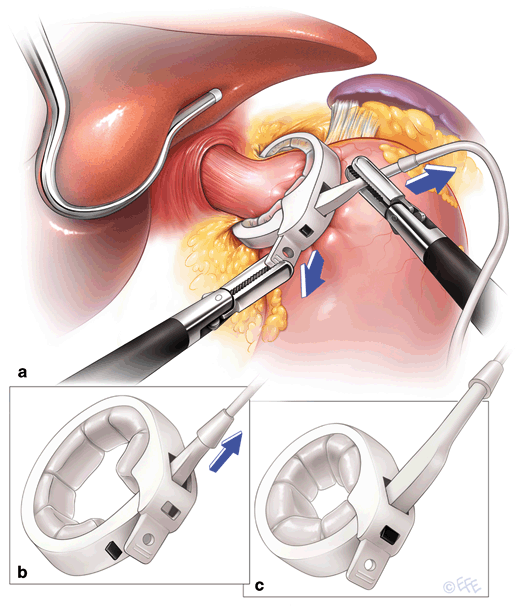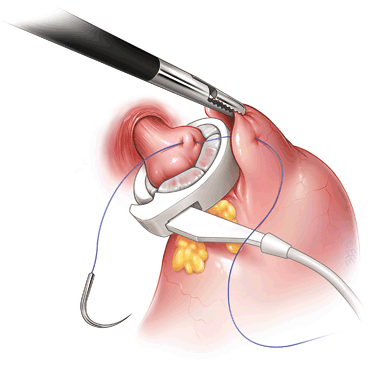Chapter 2
What Are Different Bariatric Surgery Types?
In the previous section, we discussed the basics of bariatric surgery. In this chapter, we will take a look at the most preferred types of bariatric surgery. Let’s get started.
Even though the cost of bariatric surgery may not initially seem reasonable for a lot of people, the long-term costs of obesity are even more. Therefore, obese patients go for different types of weight-loss surgical options mainly because of two reasons:
First, they are dealing with obesity-related complications that are difficult to tolerate and have tried all non-surgical treatments, yet got no answer. So, they need an effective treatment that will help them get rid of severe obesity and its associated difficulties.
Second, they are not experiencing any serious obesity-caused challenges but are worried about the passage of time and getting older, sooner or later they will have to deal with these challenges.
Types of Bariatric Surgery
Although there is different information about the first bariatric surgery, most sources claim the first operation for the purpose of weight loss was performed by Dr. Kremen in 1954. Since then, because of all the research on weight-loss surgical procedures in addition to the progress of laparoscopic surgery, experts could find various surgical methods to resolve morbid obesity.
The rising of the new surgical treatments of obesity helps more and more patients with different circumstances to benefit from this option. However, the variety of options brings about confusion for obese individuals as well.
We’ve prepared this article with the aim of providing you with thorough information on the most common procedures, their step-by-step process, benefits, and other significant information that’ll help you decide which one is the best fit for your individual situation.
Each surgery type helps you with sustained weight loss in a different way, all of which have been categorized into 4 general groups:
1- Restrictive Bariatric Surgery
Their main job is to shrink the size of your stomach. The capacity of an adult’s stomach is usually about 2.5 ounces of food. After undergoing restrictive procedures, your stomach can hold about one ounce. As a result, you will be able to eat less than before and start to lose weight.
2- Malabsorptive Surgery
Malabsorptive bariatric surgery mostly changes the patients’ digestive process. By making changes in your stomach structure, a notable portion of your food intake won’t be absorbed and will be bypassed from your body.
3- Combination of Malabsorptive and Restrictive Procedures
This type of bariatric surgery procedure not only reduces the size of your stomach but eliminates a significant portion of the nutrition taken by you from the route that food now passes through.
4- Implanting an Electrical Device
This method that has been the newest one makes some changes in your nervous system by barging in the signals your brain sends to your stomach.
Now that you know the ways in which these surgical processes work to expedite weight loss, it is time to get to know the procedures and their benefits and processes individually.
Sleeve Gastrectomy Surgery
Some patients find it interesting when they realize there is a relationship between the name of this surgery and its functionality. During this surgical procedure, the surgeon removes the major part of your stomach. What remains is a banana-size organ, which is as small as a “sleeve”.
As a restrictive procedure, this surgery limits the amount of food you can consume because it reduces the size of your stomach.
Sleeve Gastrectomy Procedure Steps
1) Your surgeon makes small abdominal incisions in order to insert small trocars for it is necessary for laparoscopic surgeries.
2) Then, the stomach is carefully inspected.
3) A tube, which is the exact size of the new sleeve-size stomach is inserted into it so that the surgeon can cut the right size.
4) There is a valve between the stomach and the small intestine called the pylorus. With a distance of about 4-6 cm from this valve, the surgeon divides, using a stapler, dividing the stomach into two parts.
5) The line will be continued till the stomach is totally divided. After that, the banana-shaped new stomach is created.
6) About 75-80% of the stomach is removed and only 20% of it remains. After carefully being decompressed, the larger part is removed through a small incision.
7) The smaller size of the banana-shaped new stomach causes patients to become full much faster than before.
To see all the steps in one place, just take a look at the picture below.
Also, here’s a sleeve gastrectomy diagram that shows your stomach before and after the surgery.
Expected Weight Loss With Sleeve Gastrectomy
If you’re willing to undergo weight-loss surgery, one of the most important points that affect your decision is the average weight loss after each type of surgery. Here’s a diagram of the average excess weight loss most people experience after gastric sleeve surgery.
Gastric Sleeve Surgery Recovery Time
Your hospital stay is estimated at about 2 to 3 days. After that, you’ll need to rest for about 4 to 6 weeks for a full recovery and then you can get back to work and your normal life.
Benefits of Gastric Sleeve
| Benefits of Gastric Sleeve |
| Shorter surgery time alongside simpler procedure in comparison with other surgical options. |
| Fewer risks, so it can be performed on higher-risk patients. |
| Effective Weight loss |
| Less recovery time |
| Blood sugar control and the complete resolution of obesity-related health issues including cardiovascular disease, type 2 diabetes and sleep apnea disorder |
| Approximately 0 chances of dumping syndrome after the operation |
In case you’re interested in the side effects of gastric sleeve surgery, don’t miss the next chapter on bariatric surgery risks.
Gastric Bypass (Roux en y Gastric Bypass)
Gastric bypass, also called Roux-en-Y gastric bypass, is one of the oldest types of weight-loss surgery, yet still one of the most popular ones.
It has been performed for more than 50 years and proved to be the final solution for morbid obesity.
Laparoscopic Gastric Bypass Procedure Steps
Gastric bypass surgery mainly includes 4 steps:
1) The first step is the creation of the gastric pouch by making the top of the stomach into a small pouch.
2) Then, in order to create a biliopancreatic limb, the surgeon cuts a loop of your small intestine. One end of this loop is connected to the previously created gastric pouch.
3) The other end of this loop is reconnected to the small intestine, which acts as another anastomosis.
4) As a result, food intakes will bypass the stomach as they will be redirected to an area farther down in the digestive system.
Here’s an image of your stomach before and after gastric bypass surgery:
Benefits of Gastric Bypass Surgery
| Benefits of Gastric Bypass Surgery |
| Improved overall health condition including the remission for type 2 diabetes and heart disease, and resolution of sleep apnea |
| More overall weight loss in comparison with other types of weight-loss surgery |
| Healthier food choices after the surgery as consuming unhealthy food creates discomfort |
| Faster weight loss right after the surgery |
Gastric Bypass Recovery Time
Gastric bypass might cause a longer hospital stay due to its more complicated process. However, the overall recovery time is just the same, about three to six weeks.
To know about Gastric bypass risks, take a look at the next chapter; it gives you a better understanding of why you need to stay at the hospital and under your doctor’s control after gastric bypass more than other procedures.
Gastric Bypass Weight-Loss Chart
To have realistic expectations, you’d better know how much of your excess weight you’ll lose after experiencing Roux-en-Y gastric bypass.
Mini Gastric Bypass Surgery
Most people who consider gastric bypass and gastric sleeve, find mini gastric bypass an attractive alternative because it is a quicker and simpler procedure.
Mini Gastric Bypass Procedure
1) The bariatric surgeon will divide the stomach using a stapler in a way that most part of the stomach is not attached and will no longer receive food.
2) About 2 to 7 feet of the intestines are bypassed. What remains of the intestines will be attached to the newly formed stomach.
3) Food intakes will only flow into your tube-shaped stomach and after bypassing 2 to 7 feet of your intestines, the usual digestion process begins.
Mini Gastric Bypass vs. Gastric Bypass
By looking at the diagram below you can see the main difference between the two procedures. There is only one join between stomach and bowel, called anastomosis, in mini bypass, but in gastric bypass there are two, which is why mini bypass takes less time.
Benefits of Mini Gastric Bypass
| Benefits of Mini Gastric Bypass |
| Simpler and quicker procedure |
| Creating only one anastomosis means less cutting, hence less risks |
| Faster recovery |
| No risk of internal hernia |
| Similar weight loss to other procedures |
Adjustable Gastric Banding
Gastric banding is distinctive because of its less invasive and reversible nature. After this obesity procedure because of the silicone band around the top of the stomach, patients become full sooner than before.
Over the course of three years, patients will lose 40 to 60% of their excess weight. The surgeon adjusts the band from time to time after the surgery using a small port beneath the obese patients’ skin. This process is not uncomfortable or painful at all.
When necessary, the gastric band will be removed and the stomach goes back to it original form.
Laparoscopic Adjustable Gastric Banding Procedure
1) First of all, a tunnel is created under visualization from the lower media aspect of the right crus.
2) Then, the surgeon grasps the band and retraces it into its right position.
3) Finally, the band is locked using the counter tension by the graspers. You can see the direction of the graspers in the picture below.
Here’s a diagram of gastric banding that shows the changes your stomach undergoes before and after this bariatric operation.
Benefits of Adjustable Gastric Banding
| Benefits of Gastric Banding Procedure |
| Least reported mortality cases among all bariatric procedures |
| The least invasive weight-loss surgery |
| No need for cutting or rerouting the intestines |
| Lower probability of nutritional deficiencies |
| Adjustability and reversibility |
Is Adjustable Gastric Banding Surgery Reversible?
Yes, as we said before, gastric banding is accounted as one of the reversible bariatric procedures. So, in case any problems with the band occur, your surgeon is able to perform the gastric band removal easily using some small incisions. This is the main reason for the popularity of this procedure.
Gastric Balloon
As the simplest bariatric procedure that eliminates adolescent obesity, gastric balloon is nowadays mostly used for patients who want to undergo weight-loss surgery, but due to high BMI are considered among high-risk patients.
After gastric balloon, they have a good few months to lose some weight, about 6 to 8 pounds per month, and then will undergo another surgical option like gastric bypass, which will help them reach their ideal weight and lose almost all of their excess weight.
Gastric balloon procedure, performed with an endoscopic method, takes about 15 minutes. The result of this surgery is reduced capacity of the stomach, which causes obese patients to eat a lot less than before.
Gastric Balloon Procedure
1) With sedoanalgesia method, patients will be relaxed and allowed to sleep for about 15 minutes.
2) With the help of an endoscopic camera, the gastric balloon is inserted and placed into the stomach. This balloon is flexible, so it can easily pass through the esophagus with no hassle.
Here’s another picture that shows how your stomach looks when it’s full after the intragastric balloon procedure.
Candidate for Gastric Balloon
| Good Candidates for Gastric Balloon |
| Obese patients between the ages 18 and 60 |
| Patients with high BMI (above 40) who want to reduce the risks before undergoing another type of bariatric surgery |
| Patients with BMI between 30 and 39 |
| Patients with no difficulties in the digestive system, including large stomach hernia and stenosis |
| Patients who have not experienced any type of bariatric surgery before |
| People with no alcohol or drug addiction |
Biliopancreatic Diversion
Biliopancreatic diversion is one of the most complicated bariatric procedures, yet so effective especially for patients with BMI more than 60 kg/m2.
Biliopancreatic Diversion Procedure
1) During the first step, the surgeon, using metal staples, cuts through the stomach to create a pouch.
2) Then, the remainder of the stomach, which is about almost one-quarter of its original size, is removed.
3) Finally, one end of your small intestine will be attached to the pouch. From now on, food will flow from the pouch and enter this section of the small intestine.
Here’s a clear visual representation of your stomach after the surgery:
Why Biliopancreatic Diversion?
| Benefits of Biliopancreatic Diversion |
| Reducing high serum glucose and cholesterol |
| Effective weight loss |
| Reduced nutrition absorption |
| Beneficial for patients with BMI over 60 |
Biliopancreatic Diversion with Duodenal Switch
Also called a duodenal switch, biliopancreatic diversion with a duodenal switch is a type of surgery to facilitate rapid weight loss.
This surgical process reduces the length of your small intestine in addition to the size of your stomach. Moreover, the number of nutritions you can eat and your body absorbs declines as well.
After creating a pouch and removing the rest of the stomach, a very short part of the small intestine is attached to it. This part is called the duodenum and this step is known as duodenal switch.
As a result, the food consumed by patients solely goes through the new stomach pouch. Because the food bypasses the small intestine, through the digestion process patients absorb fewer calories.
Biliopancreatic Diversion With and Without Duodenal Switch
According to a clinical comparison between biliopancreatic diversion and biliopancreatic diversion, the main reason for preferring BPDDS is that even though the excess weight will be lost up to 70% after biliopancreatic diversion, there is a high risk of malnutrition and diarrhea, which can be preserved if the procedure is done with duodenal switch.
Laparoscopic Single Anastomosis Duodenal-Ileal Bypass with Sleeve
We’ve mentioned the most popular and oldest types of bariatric surgery, but now is the time to introduce the one that is accounted as one of the most recent ones.
Described first in 2007, BDP-DS with sleeve was invented to streamline the complex process of BDP-DS. SADI-S, just like the other bariatric surgical options solves any obesity-related severe medical condition including high blood pressure, fatty liver disease, obstructive sleep apnea, and type 2 diabetes.
SADI- S is a perfect option for patients who have undergone sleeve surgery but are looking for even more weight loss.
SADI-S Procedure
1) The procedure starts by making a small, tube-shaped stomach. This is exactly how sleeve gastrectomy starts.
2) Afterward, the surgeon will divide the small intestine just after the stomach.
3) Next, to connect the intestine to the stomach, a loop of it, feet from the end, is measured and an intestine connection is performed.
The picture below shows the stomach after the completion of this process.
Difference Between BPD-DS and SADI-S
Which Is the Safest Bariatric Surgery?
Before answering this question, you should know one fact: the more weight loss you experience after a type of weight loss surgery, the higher are the risks and complications. In other words, the more invasive procedures are exactly the ones that bring about noticeable, sustained weight loss.
Among all the surgical and nonsurgical weight loss procedures, there are three that are relatively known as the least risky ones:
1- Gastric balloon
Gastric balloon is a nonsurgical, yet popular bariatric procedure, and because of its nonsurgical procedure, it has the least complications. The process of the balloon insertion takes at most 30 minutes. In the case of swallowable balloons, such as the Elipse gastric balloon, the procedure is simple and you have almost no side effects after the placement of the intragastric balloon inside your stomach.
However, the weight loss that happens during the time you have it in your body is way less than the ones after more invasive ones, like gastric bypass. Moreover, if you start eating a lot and reduce your physical activity, the chance of weight regain is higher. Yet again, if you’re looking for safety, this procedure is highly recommended. It gives you the chance of weight loss for almost 6 months and then you can continue your journey more easily and with a determined mind.
2- Gastric banding
Even though gastric banding is a surgery, it is the least invasive one and has the fastest recovery as patients can go back to work after a week. The entire procedure takes 30-60 minutes. You lose weight after this surgery, even more than gastric balloon, but not as much as the amount you do with other surgical procedures.
3- Gastric Sleeve
Among the more invasive surgeries, such as gastric bypass and duodenal switch, sleeve gastrectomy still wins the safety competition. According to research led by the University of Michigan Health gastric sleeve patients experience fewer complications in comparison with patients who undergo gastric bypass.
When comparing two of the most common weight-loss surgeries, a research team led by the University of Michigan Health found that long-term, sleeve gastrectomy is safer than gastric bypass for Medicare patients.
In our weight-loss surgery types article, we have compared different types and their risks as well. You can take a look at the table that shows the exact complications after each procedure there.
Beware that the final decision is yours. Sometimes the severity of obesity does not allow less complex procedures, like gastirc balloon, to come effective. Therefore, even if you undergo them, in the case of weight regain in the future, what are the dangers of obesity?
But never make a decision if you’re not sure of it.
Revisional Bariatric Surgery
Revision bariatric surgery, or simply called revisional surgery, is performed when an obese patient experiences weight-loss surgical treatment, but is not satisfied with the result.
This may occur mostly when patients do not pay attention to their diet and exercise. However, patients are not always responsible for this failure as in some cases their bodies do not respond to the type of surgery they’ve chosen.
For instance, if you’ve experienced lap band but have not received satisfying results even after adjusting the band, you can try gastric bypass as your revision surgery.
However, just like any other surgical procedure, it has its own risks, so thorough consultation with your surgeon is strongly advised. We’ll talk about the risks of this surgery in the next chapter where we completely discuss the side effects of all the bariatric surgery options.
Ready for the Next Step?
Now that you have all the necessary information about bariatric surgery, its types, and cost, you might make your decision on which one to go for. However, it is too soon to choose the type of your surgery because you still don’t know about their risks.
So, let’s move on to chapter 3 to find out more about the side effects of each of these procedures.
In case you’ve forgotten the basics of bariatric surgery, get back to chapter 1.

